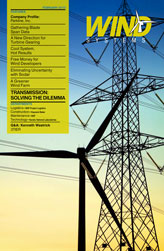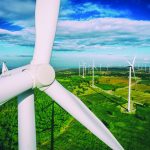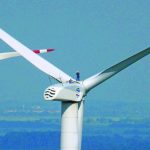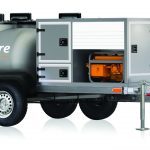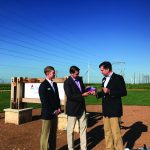A robust, reliable, and high-quality supply chain of wind turbine blades is crucial for the sustainability of the wind industry to ensure growth and projected demands. With approximately 8,300 MW installed in 2008, and 5,800 MW installed through the third quarter of 2009, the demand for wind energy in the United States has experienced exponential growth over recent years and has led to a large capital investment in U.S.-based manufacturing. Typical utility scaled wind turbine blades being manufactured today can range between 30 to 60+ meters in length, but given that all U.S. installations are land-based the range is between 30 to 45+ meters. Wind turbine blades pose manufacturing and supply chain challenges given their large size, large amount of raw materials, and significant labor content associated to the various accepted manufacturing processes. Additionally, in order to meet demand and support large and emerging global markets, some utility scaled turbine manufacturers have their own blade manufacturing, while others have chosen to purchase them from component suppliers to displace risk and large capital investment in manufacturing infrastructure.
Focusing on a record year, 2008, where approximately 8,300 MW were installed across the U.S. and the average machines being 1.5 MW in size (~40 meter blades), ~16,700 blades were manufactured just to meet the U.S. installations. A typical 40 meter blade weighs approximately 12,500 lbs, is composed of fiberglass—some OEM’s have carbon fiber on spar cap, core material (balsa wood or foam), and a resin system (epoxy, polyester, or vinylester)—and is primarily manufactured through an infusion process. Out of the total weight of a blade the dry fiberglass can represent 70 percent of the total weight, the resin 25 percent, and the rest is the coring material. The raw material supply and delivered quality is crucial to manufacturing a high quality product that not only can meet the certified requirements, but also survive the industry average design life of 20 years. Recent publicly announced large failures of blades reminds us of the importance of design, manufacturing, testing, and the supply chain to ensure the sustainability of this industry.
Sandia National Laboratories (SNL), through the support of the Department of Energy (DOE) Wind and Hydropower Technologies Program office, has embarked on a manufacturing program to address the challenges and opportunities of manufacturing high quality cost effective wind blades. The program is mutidisciplinary in nature, where quality, reliability, and cost effectiveness are the primary metrics for success.
To address and ensure quality, the program targets improvement opportunities in robust and lean manufacturing techniques to minimize human errors, given the labor intensiveness in manufacturing, and nondestructive inspection techniques (NDT) to identify and address issues in the finish product prior to shipment and delivery. The nondestructive techniques typically used for wind blades, ultrasonic and thermography, provide mixed results and vary in applicability given the complex geometry and internal architecture. Through experience and design, knowledgeable manufacturers inspect critical regions and developed guidelines for acceptable flaws. SNL’s manufacturing program evaluates all available applicable NDT techniques to develop a portfolio of options that will minimize false-positive inspection results, which can lead to field problems where the cost of repair grows exponentially.
Another objective of the program is focused on automation and increased plant throughput. Given the small margins in blade manufacturing, the program focuses on quantifying optimal plant layouts, given manufacturing process and sequence, and identifying the most promising areas to automate given the capital investment and equipment payback time.
Given expert projections or the results of industry studies—such as the DOE 20-percent by 2030 scenario where the analysis documents the viability and improvements needed to achieve 20-percent wind energy by the year 2030—it is clear that a high-quality wind blade supply chain is needed. Although the research results at SNL are ongoing, the program is designed to disseminate these findings throughout the program in support of this growing industry.
















